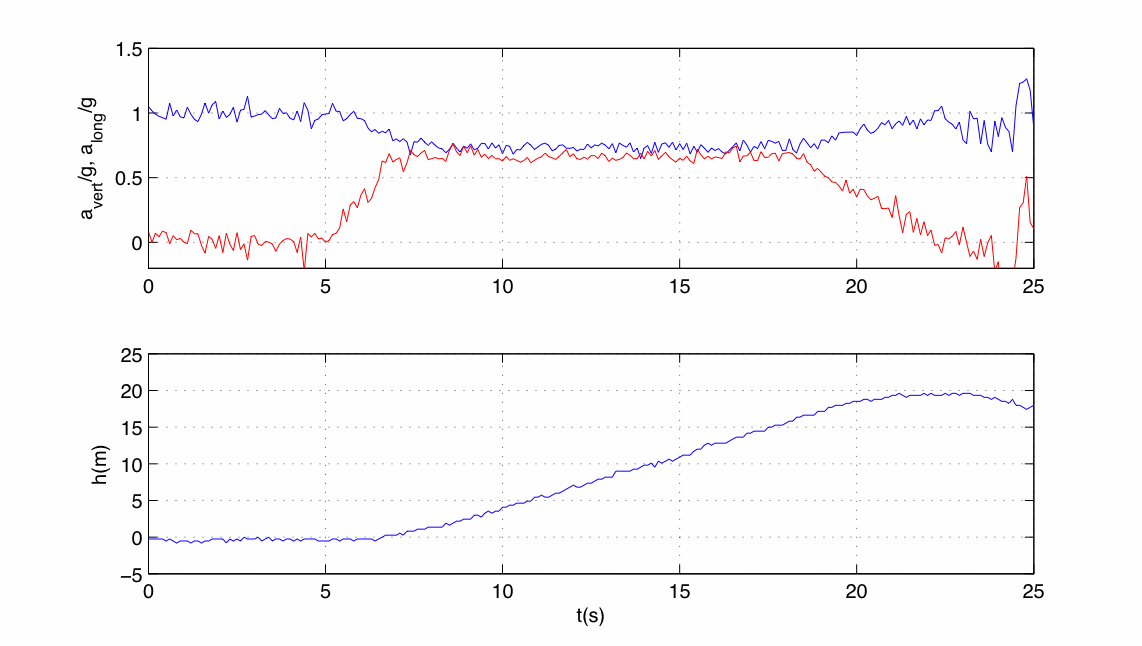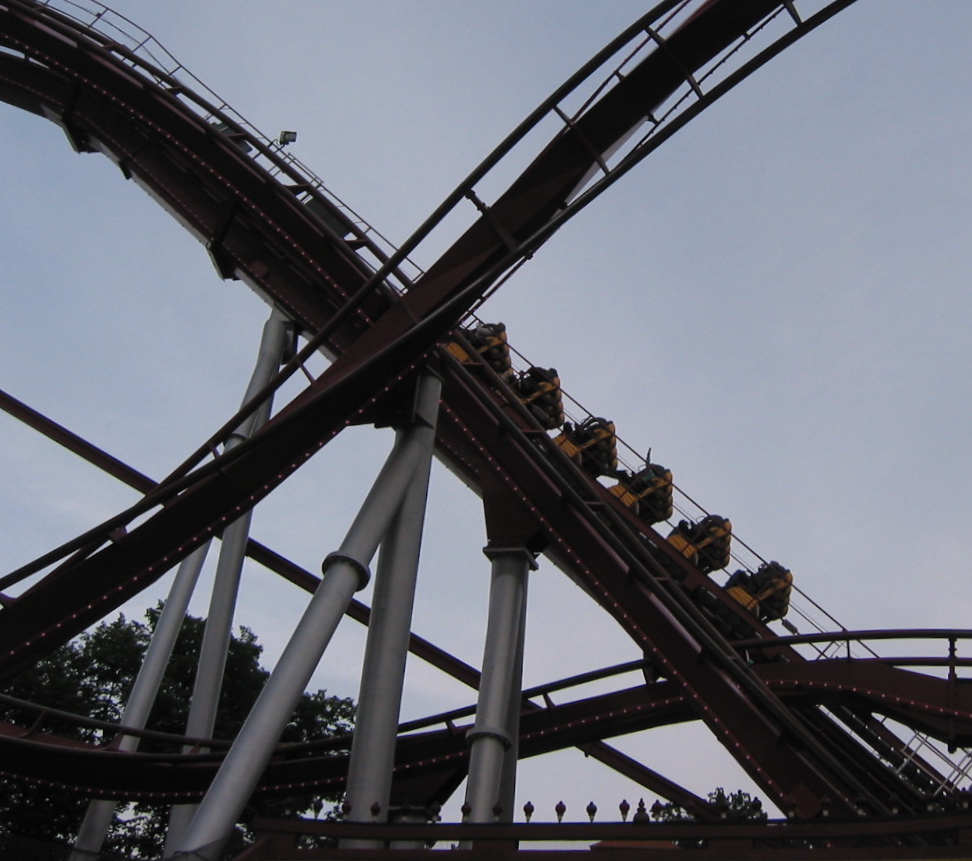Dæmonen - the Lifthill
The photo the right below shows the lifthill.
-
How steep is the lifthill? Estimate the angle - from the photo or in Tivoli.
- What are the forces on the body
on the way up? Draw a free-body diagram. How large are the components of the force from the ride from the seat? From the back? Make sure that the vector sum of the forces from the ride and the force of gravity is zero (see example)!
- The figure below show accelerometer and elevation data for the lifthill in Dæmonen.
The blue graph corresponds to the normal force on the rider, and the red graph is the force in the direction of the track (divided by mg). Since the train is in “uniform rectilinear motion” in the lifthill, these values should correspond to the cosine and sine of the angle of the lifthill.


- Estimate the vertical velocity component from the elevation data above: ___________
- How fast does the train move up the lifthill? (Divide the vertical velocity by sine of the angle?)
_____
- In the park: Measure the time taken by the train to pass a point in the lifthill :T= ________
Use the length of the train (L=?) to calculate the speed of the train: v=L/T = ________
How well does your result agree with the results from the data in the graph below?

